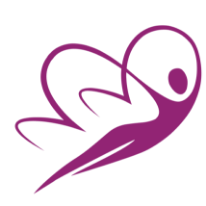How to Relieve Muscle Stiffness with Physical Therapy
Muscle stiffness is a common issue that affects people of all ages, whether due to strenuous physical activity, prolonged periods of inactivity, or underlying medical conditions. When muscles become tight and inflexible, they can cause discomfort, restrict movement, and potentially lead to more severe injuries. Fortunately, physical therapy is an effective and often recommended approach to relieve muscle stiffness and restore flexibility, strength, and overall mobility. This article will explore various ways physical therapy can help relieve muscle stiffness and improve quality of life.
Understanding Muscle Stiffness
Muscle stiffness refers to the feeling of tightness or resistance in a muscle, which can make movement difficult or painful. It can result from various factors such as muscle overuse, injury, dehydration, poor posture, and lack of stretching or warm-up before exercise. Stiffness may also arise due to medical conditions like arthritis, fibromyalgia, or muscle imbalances.
When stiffness occurs, it can inhibit blood flow, limit the range of motion, and increase the risk of injury. Addressing muscle stiffness early can help prevent chronic pain and improve muscle function. Physical therapy plays a key role in targeting the root causes of muscle stiffness and implementing effective treatment strategies.
The Role of Physical Therapy in Relieving Muscle Stiffness
Physical therapy is a specialized form of treatment that focuses on movement rehabilitation, pain relief, and functional mobility improvement. By working with a licensed physical therapist, individuals can receive personalized care tailored to their specific needs and conditions. The following are several physical therapy techniques commonly used to alleviate muscle stiffness.
1. Stretching Exercises
Stretching is one of the primary methods physical therapists use to relieve muscle stiffness. When muscles are tight, targeted stretching can increase their flexibility, improve circulation, and reduce tension. Physical therapists will often guide patients through specific stretching routines that target the stiff muscles. There are different types of stretching used in physical therapy, including:
Static stretching: Holding a stretch for a set period to lengthen the muscle gradually.
Dynamic stretching: Active movements that stretch muscles and improve the range of motion.
Proprioceptive Neuromuscular Facilitation (PNF) stretching: A technique where the muscle is alternately contracted and stretched to improve flexibility and strength.
By incorporating these stretches into a regular routine, patients can maintain or improve their muscle elasticity, which helps alleviate stiffness over time.
2. Manual Therapy
Manual therapy is a hands-on technique where physical therapists use their hands to manipulate muscles, soft tissues, and joints. This approach is highly effective for reducing muscle stiffness by breaking down adhesions, improving tissue mobility, and restoring proper muscle function. Techniques used in manual therapy include:
Massage therapy: Targeted massage can help loosen tight muscles, increase blood flow, and promote relaxation. Deep tissue massage, in particular, is effective for chronic muscle stiffness.
Joint mobilization: This involves gentle movements of the joints to restore range of motion and relieve stiffness around the joints, especially when caused by arthritis or injury.
Myofascial release: This technique focuses on releasing tension in the fascia, the connective tissue surrounding muscles, to improve flexibility and reduce pain.
Manual therapy can provide immediate relief from stiffness and complement other physical therapy techniques like stretching and exercise.
3. Therapeutic Exercises
Physical therapists develop customized exercise programs that focus on strengthening and stabilizing the muscles surrounding the stiff areas. Therapeutic exercises are vital for correcting muscle imbalances, which are often a contributing factor to stiffness. Common exercises include:
Strengthening exercises: These target weak muscles that may be overcompensating, leading to stiffness in surrounding muscles.
Range of motion exercises: These are designed to improve joint flexibility and prevent stiffness from limiting mobility.
Endurance exercises: Regular, low-impact activities such as swimming or cycling can improve circulation and help loosen tight muscles.
By performing these exercises consistently, individuals can strengthen their muscles, reduce stiffness, and enhance their ability to perform daily activities without pain.
4. Heat and Cold Therapy
Heat and cold therapies are commonly used in physical therapy to relieve muscle stiffness. Heat therapy increases blood flow to the affected muscles, helping them relax and reducing stiffness. Cold therapy, on the other hand, reduces inflammation and numbs pain, making it useful for acute stiffness or injury. Physical therapists may alternate between heat and cold treatments, depending on the patient’s condition, to provide maximum relief.
5. Electrical Stimulation
Electrical stimulation, or e-stim, is another technique that can alleviate muscle stiffness. During e-stim therapy, electrical impulses are sent to the muscles through electrodes placed on the skin. These impulses stimulate the muscles, promoting blood flow, reducing pain, and relaxing stiffness. E-stim is particularly effective for people with chronic conditions like arthritis or fibromyalgia, where muscle stiffness can be persistent and difficult to manage.
Muscle stiffness can significantly impact an individual’s mobility and quality of life, but with the right physical therapy techniques, it is possible to find relief. Through stretching exercises, manual therapy, therapeutic exercises, and modalities like heat, cold, and electrical stimulation, physical therapy addresses the root causes of stiffness and restores muscle function. Consistently following a physical therapy regimen not only helps alleviate existing stiffness but also prevents future episodes, improving overall health and well-being.
For those experiencing chronic or severe muscle stiffness, consulting a physical therapist is essential to develop a personalized treatment plan and take the first steps toward recovery.


